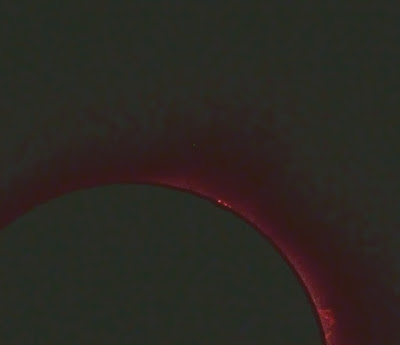AKA - What's that eyepiece doing in my telescope?
I haven't really enjoyed any visual observing for awhile (couple months) and wanted to catch Jupiter in the 11" EdgeHD. So, I came up with this project. Ordinarily it would be a simple matter of removing the imaging train and installing a diagonal and eyepieces. But, this turned into an expanded project.
For one thing, without the camera on the scope, I would be unable to perform image links when finding objects.
This project resolved that by replacing the finderscope on top of the C11HD with the autoguider (scope and camera) from the AVX platform (WFPIP).
So, I made that transfer yesterday, the 11th. (11-Jun-2017)
Below are my diary notes for the 12th.
06/12/2017
Had a very successful morning converting the C11HD to visual.
I wanted to use the SV50 guidescope with the QHY5L-II autoguider on the C11HD to be used as a finder by image linking in TSXPro.
Found I could easily perform an image link using the QHY5L-II/SV50 autoguider combination, along with the Orion 2x Shorty Barlow.
Image link stats indicated a scale of 3.60 as/p, with the camera binned in the ASCOM set-up.
Used Venus to align this "digital finder".
Later, played with using the SV50 guidescope with QHY5L-II autoguider to autoguide to test the ability to use as a separate autoguider and possibly eliminate the OAG.
That would be nice. But, that's another project for another day.
After aligning the "digital finder"* with the main scope using Venus, I was able to use TSXPro to locate the galaxy by image linking on the autoguider's image by taking an exposure in TSXPro using the autoguider camera (QHY5L-II).
*QHY5L-II/SV50 autoguider combination, along with the Orion 2x Shorty Barlow.
Image link stats indicated a scale of 3.60 as/p, with the camera binned in the ASCOM set-up.
M31 appearing in the PHD2 screen, using 0.5 sec exposures. The QHY5L-IIM was configured to bin 2x2 in the ASCOM setup, yielding a combined pixel size of 7.5um and an image scale of 3.60, with a 2x Barlow.
Plate solution (per TSXPro):
******** ASTROMETRIC SOLUTION RESULTS ********
Center RA (2000.0): 00h 41m 45.34s
Center Dec (2000.0): +40° 39' 29.8"
Scale: 3.60 arcseconds/pixel
Size (pixels): 640 x 480
Angular Size: 0° 38' 25" x 0° 28' 48"
Position Angle: 2° 31' from north through east
Mirror Image: No
RMS: 1.58 (X: 0.92 Y: 1.29)
Number of Stars Used in Solution: 7 (100%)
FWHM: 4.21 pixels, 15.16 arcseconds
***********************************************
Autoguiding with the "digital finder". (Taken 4:31am - getting light out.)
For camera conversion services, i.e., having your DSLR "IR Modded" (IR filter removed), visit Life Pixel Camera Conversion Services
here











































